Following the sad site that was the demolished Castle at Coolbanagher, I discovered a gorgeous surprise just a few meters away on the opposite side of the road. With the sun beating down, the day was really starting to pick up. What I found was a medieval church set in the centre of a stone walled graveyard. Unlike its unfortunate neighbour this early medieval church which dates back to the eight century has been well looked after considering its age, even the grass looks to be cut on a regular basis. Set in a rural area, surrounded by pasture and crop lands, these ruins were a welcome treasure to explore. The church rests on the site of an early Christian monastery. Although I could find little about this site it was known to have been associated with two saints. Saint Lughach the son of Lughaidh and a Saint Sinche, daughter of Annudh. According to the 12th century preface of the ‘Martyrology of Tallaght’ Lackagh, another famous saint whom visited the church at Coolbanagher sometime in the 9th century was Oengus of the Ceilí Dé, also known as St. Aengus.
Apparently Aengus began to write the ‘Martyrology of Tallaght’, at Coolbanagher and completed the work back at the monastery in Tallaght. Little remains of this monastery, but you can read more about it in one of my previous posts about St. Maelruainswhich sits on what was once the famous monastery in Tallaght. It was also here at Coolbanagher, where he is believed to have seen visions of angels which inspired him to write ‘Feilire’, which can now be seen at the Royal Irish Academy in Dublin. After this there is little known about Coolbanagher until, in 1546AD a Patrick Obecan was appointed as chaplain to the vicarage of Culbanhir (Coolbanagher). Then in 1572AD Sir Maurice FitzThomas FitzGerald, a knight of Lackagh, in County Kildare, obtained a twenty-one years lease of the Rectory of Coulbenker, (Coolbanagher). Early in the 17th century a John Mimer is mentioned in a Funeral Entry as being Minister of Culebannigher [Coolbanagher] in the Queens County.
By 1903Ad the site was said to be in a ruined state, covered in ivy and mostly overgrown. The graveyard itself consists of a rectangular boundary wall with an access gate in the west wall and contains many 18th century headstones, mostly recumbent or round headed which are still in good condition, although some are leaning or have collapsed. The earliest date I was able to make out from the various grave stones and memorials was for a Henry Tool in 1728. In the centre of all this lies the medieval church with both gables and walls still intact. The church is about 19m by 7m and consists of a chancel and nave with a Romanesque doorway in the west gable.The chancel arch is pointed, and made of course limestone. The Chancel narrower than nave by 1meter and is butt jointed. The dividing wall shows signs of the remains of Romanesque arch. Inside the church I found a rather interesting early Christian cross slab set into the north wall. Made of sandstone, this cross slab has a rather interesting engraved Greek cross with T-shaped terminals. This was not its original location and was moved here after restoration works were carried out some years ago. There are also some memorial/burial slabs in the eastern part of the church.
Due to a restoration project which was due to be carried by a FAS sponsored Youth Training Program, an archaeological survey began in 1993.During the course of these works a considerable amount of archaeological material was found.These finds include architectural fragments from the church building, quern stone fragments, iron slag, fragmented & scattered skeletal remains and some sherds of medieval and post-medieval pottery. The excavations also discovered evidence of four separate phases in the construction of Coolbanagher. The first phase dated back to early Christian times consisted of the original stone church which was rectangular in shape with a post & lintel door in the west and a round headed window in the east. Phase two was known as Romanesque, where a Chancel was added to the church and the west door was altered with the addition of a round-headed arch. The third phase from the late medieval period included an extension of the Chancel and the inclusion of a window in the south west end of the Chancel. The Romanesque Chancel arch was also replaced with a Gothic arch during this time. The final phase happened in what is called modern times and happened sometime after the burning of the church which is said to have happened in 1779. The church was said to have been converted for use as an outhouse or barn with quite a bit of repair work being required to stabilize the structure.
Thankfully what we have left today is a nice medieval ruin which is kept in good condition. Its peaceful setting can be enjoyed by visitors. If you happen to be in the area, stop by and have a look around as it is well worth a visit. Just remember the golden rule when visiting these sites, ‘Leave only Footprints’ and hopefully it shall still be standing in another thousand years.
For these and more of my images, why not visit my Website or join me on Facebook or Twitter.


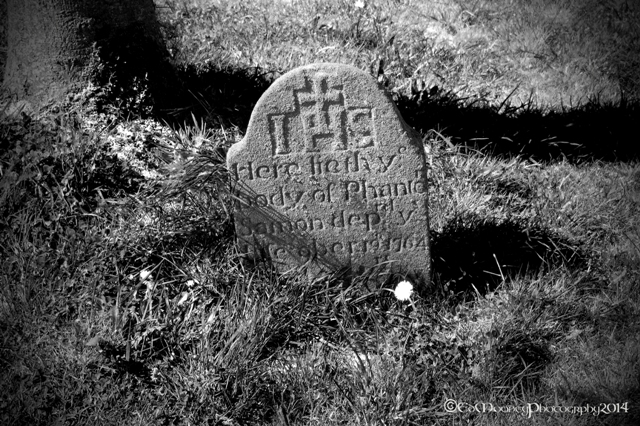

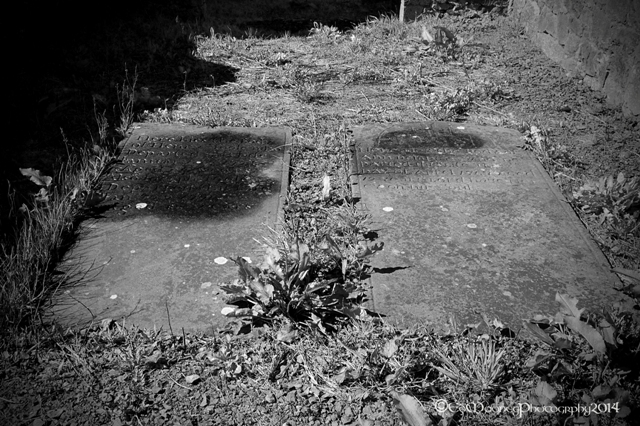
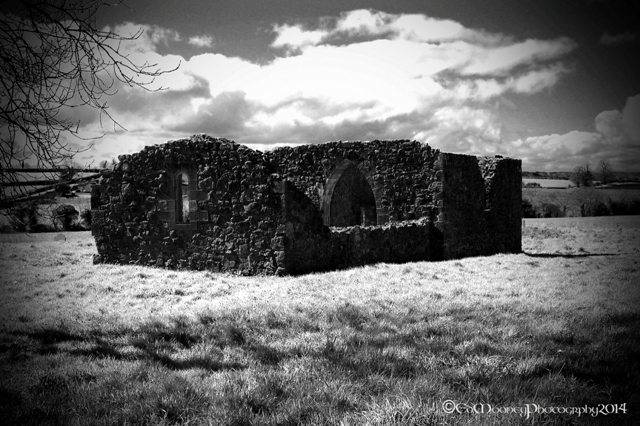

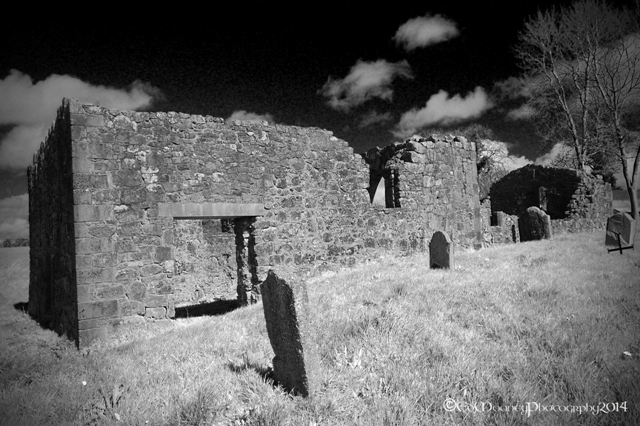

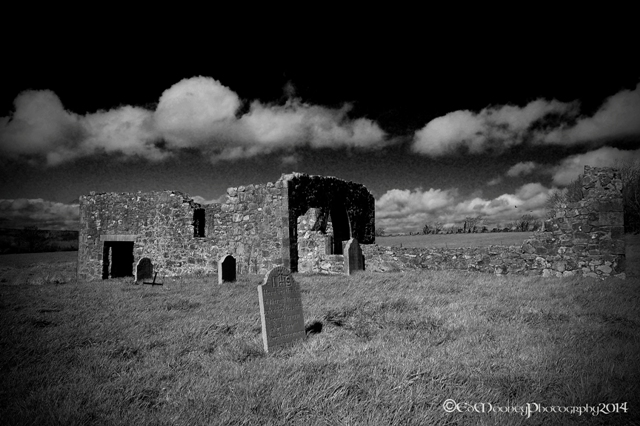




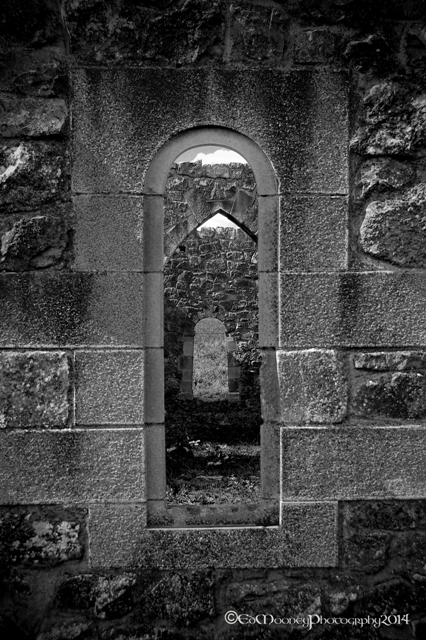

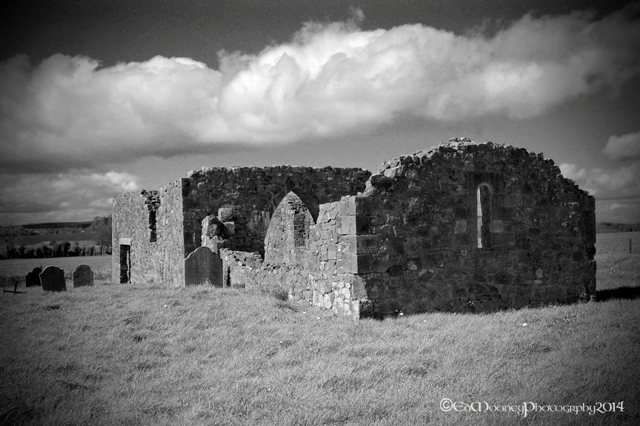
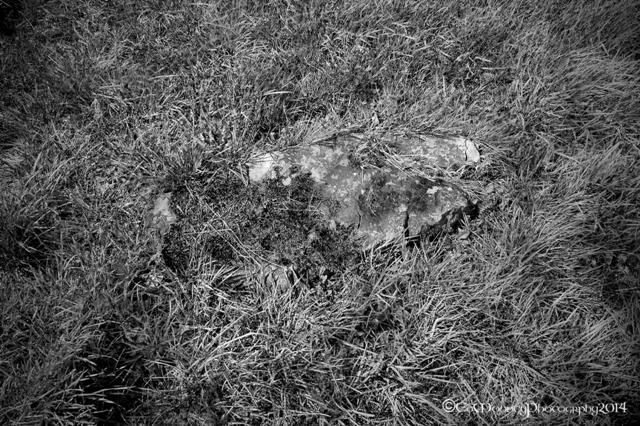

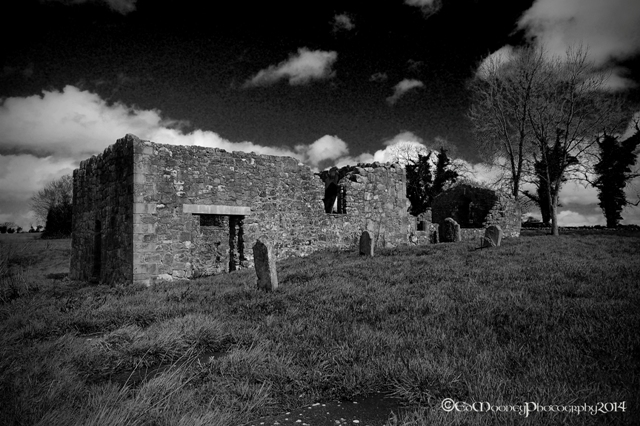


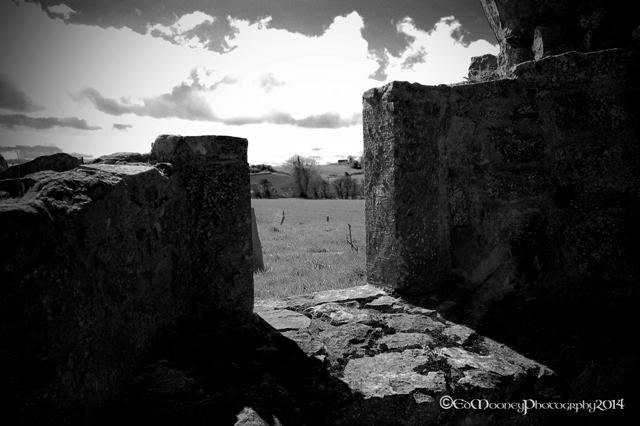


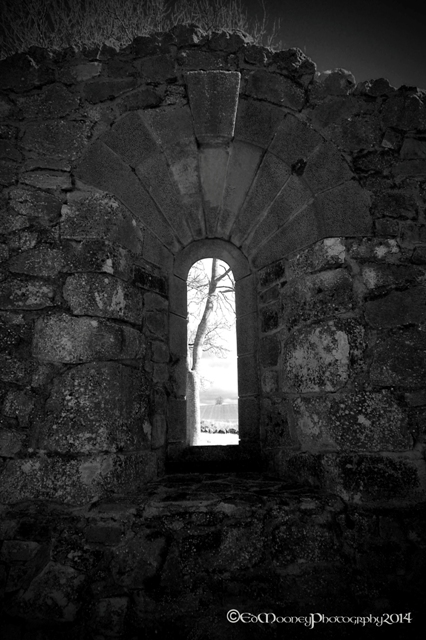
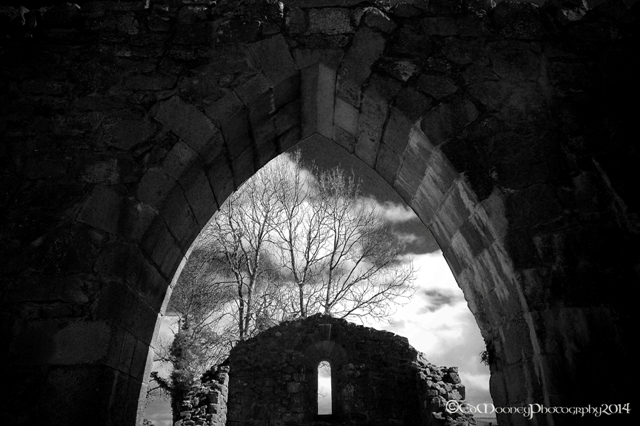



Wonderful – thanks for all the information and the time you devote to your photography and writing. You’re a National Irish Treasure!
LikeLiked by 1 person
Ah Thanks 🙂
LikeLike
Great series, Ed!
LikeLike
Thank you, really glad you liked it 🙂
LikeLike
Congratulations of the find – the better with the bitter for your explorations.
LikeLike
Absolutely 🙂
LikeLike
Great series!
LikeLike
Why Thank you 🙂
LikeLike
Wow! I deeply admire your stpries and photos! Thanks!
LikeLike
Thank you Kate, really glad that you like them 🙂
LikeLike
Beautiful photos and really great job delving into its history!
LikeLike
Thank you so much, glad you liked them 🙂
LikeLike
Love the pictures and story line…
LikeLike
Thank you Kirt 🙂
LikeLike
Very moody picture. I like it though.
LikeLike
Thank you Gerry, much appreciated 🙂
LikeLike
fascinating – thank you
LikeLike
🙂
LikeLike
Ed, this post is crazy good. I want the font on that headstone! That’s marvelous! Thank you for giving us a tour of where some of our ancestors lived… saves me the airline ticket.
LikeLike
Thank you, its my pleasure. That font really is cool, ive been looking for something similar myself. I’ll let you know if I find a match 🙂
LikeLike
Some great shots! Thanks for the visit!
LikeLike
Thank you Julia 🙂
LikeLike
Today I just went in the past by just reading it 🙂 Thanks for the post.
LikeLike
My pleasure, glad you liked it 🙂
LikeLike
Reblogged this on rebloggobbler.
LikeLike
Ed, thanks so much for your thoughtful post and gorgeous monochrome images! Sometimes monochrome is simply the best, most effective way to tell a story. I think that if these had been in color, they would still have been beautiful, but in black and white and shades of grey, they implore you to listen to their story.
LikeLike
Wow, Thank you for the kind words, really glad that you enjoyed them, 🙂
LikeLike
Love your black and white images. Nicely done. Cool to see places I will probably never be. All the best, Alex
LikeLike
Why thank you Alex, its great to be able to share these with everyone, so glad you enjoy them 🙂
LikeLike
Pingback: My Photoblog Adventure 2014, A year in review Part 1 | EdMooneyPhotography